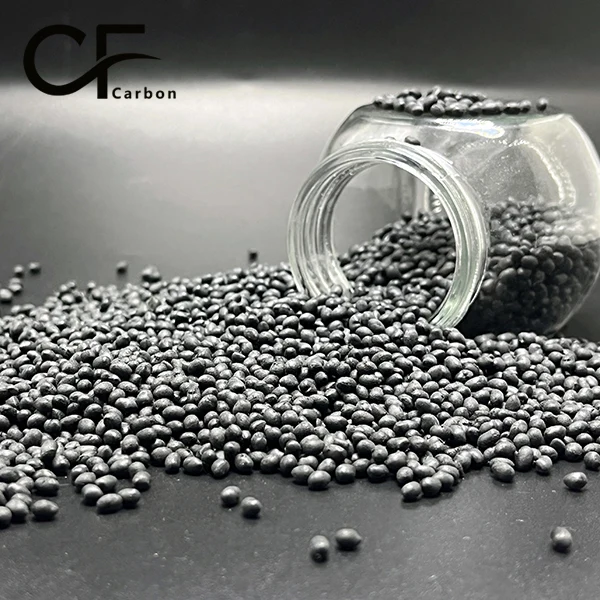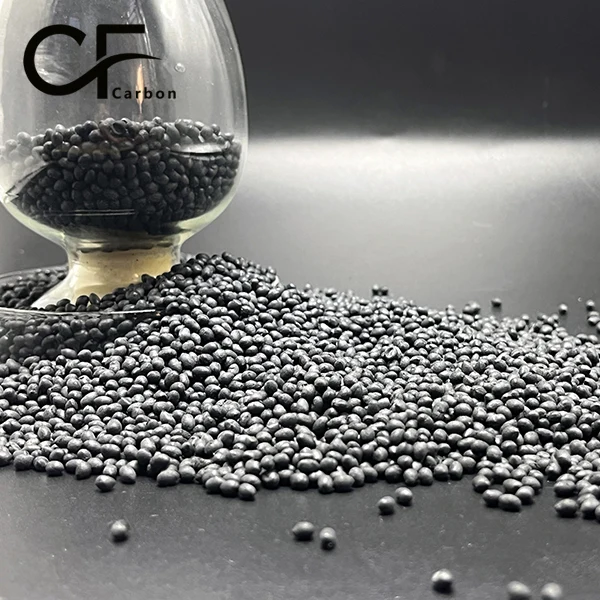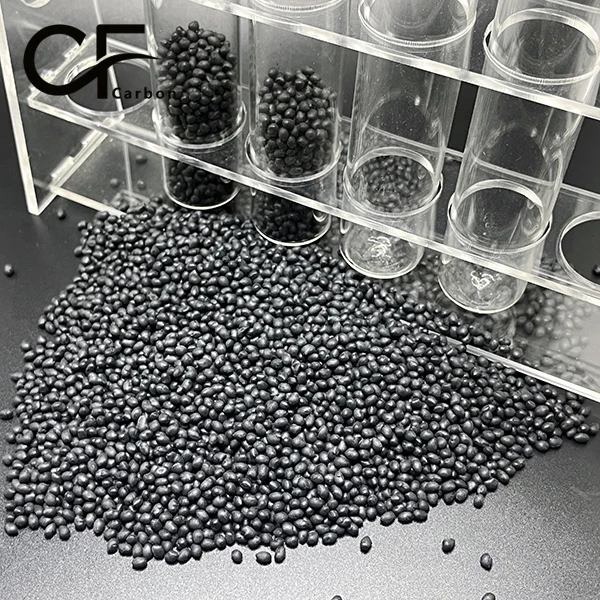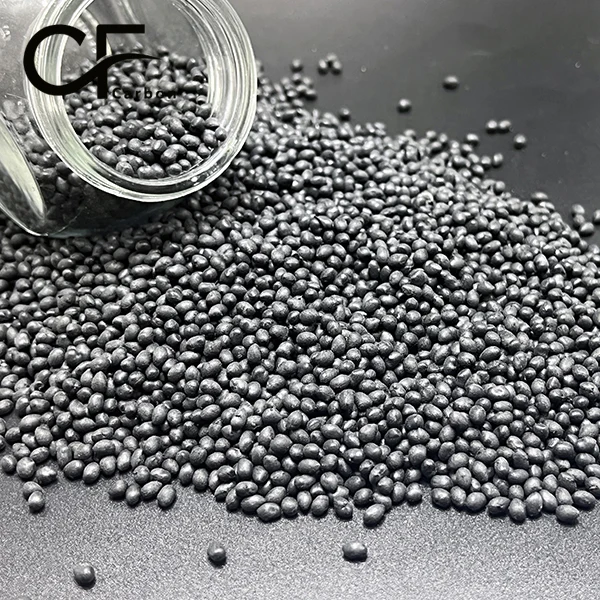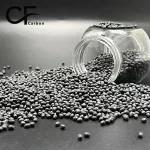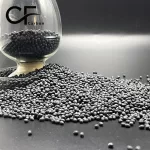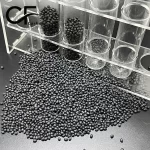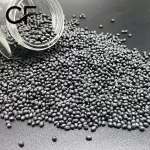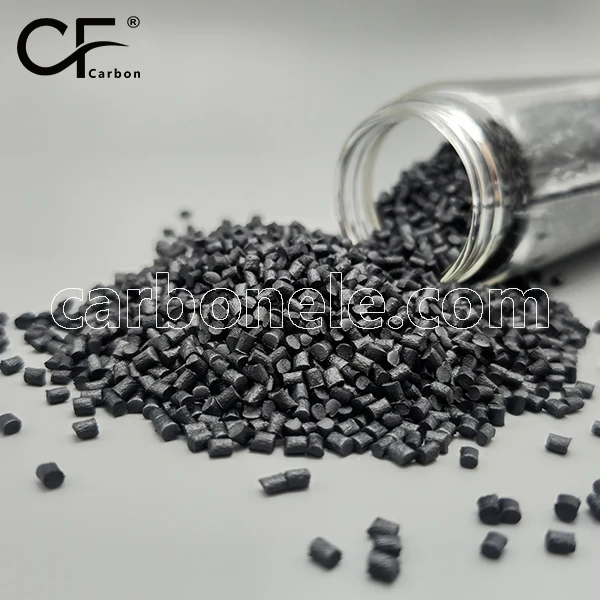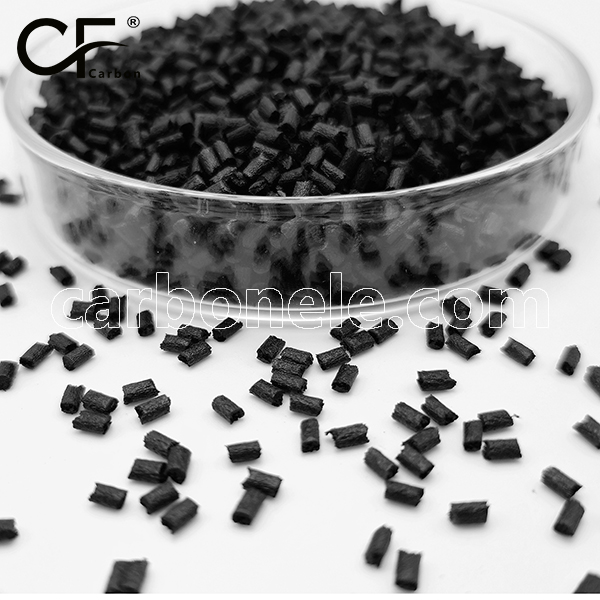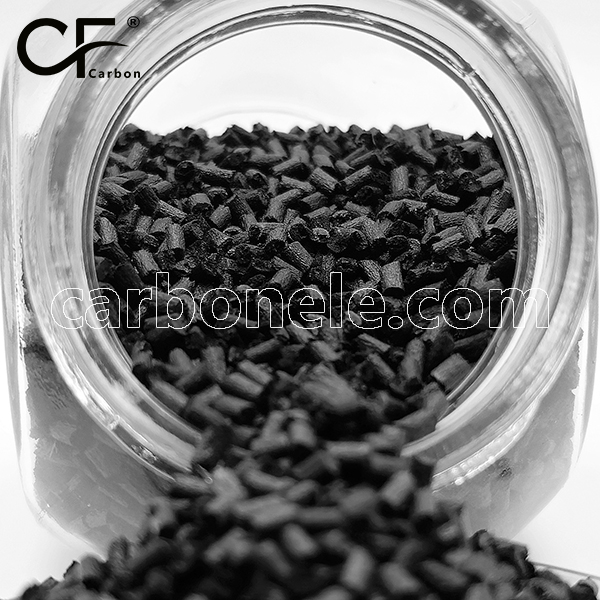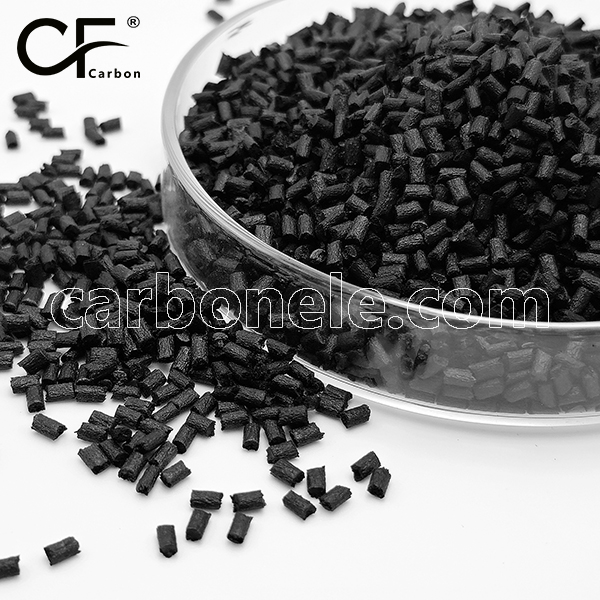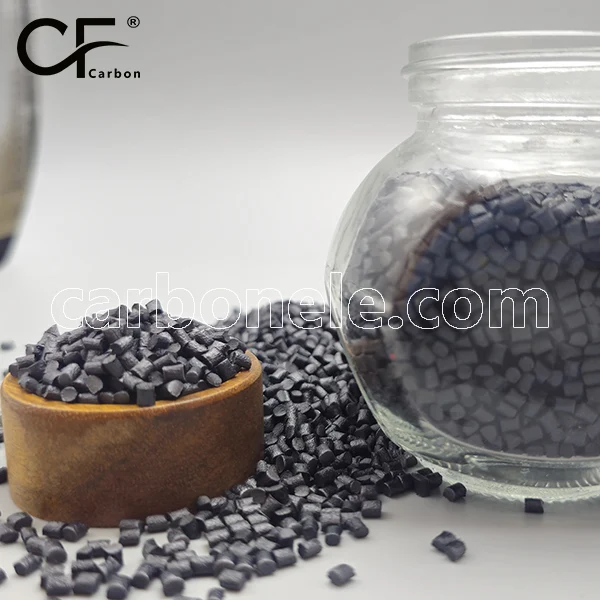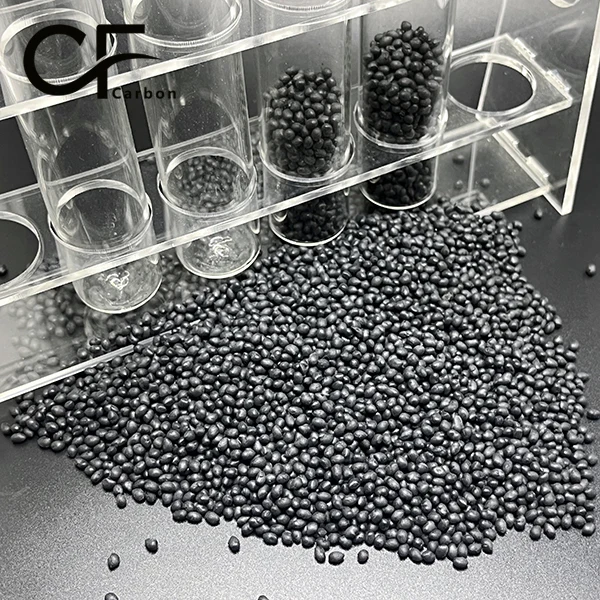
PETG Carbon Fiber Thermoplastic Pellets for 3D Printed Filaments
1: Interlayer bond strength of 9.2 MPa.
2: Heat deflection temperature of 78°C.
3: Linear expansion coefficient 5.8×10⁻⁵/°C.
4: Impact strength reaching 45 kJ/m².
5: Melt flow rate stable at 15g/10min.
- Manufacturer: Carbon New Material
- OEM/ODM: Acceptable
- Color: Black
- Free samples: ≤10kg
- MOQ: 100kg
- Port: Xiamen
- Model: PETG-CF-BCA05
- Fillers: SCF
I. PETG Carbon Overview
PETG Carbon fiber reinforced thermoplastic pellets are a high-performance engineering plastic, using polyethylene terephthalate glycol (PETG) as the base material, with precisely proportioned carbon fiber reinforcement. These PETG Carbon Fiber Thermoplastic Pellets significantly enhance the material’s mechanical strength and thermal stability while retaining PETG’s excellent transparency and processability, making them an ideal raw material choice for producing high-quality 3D Printed Filaments.
II. Key Properties of PETG Carbon
1. Excellent Interlayer Adhesion
3D Printed Filaments made from PETG Carbon reinforced material achieve an interlayer bond strength of 9.2 MPa during printing, 40% higher than standard PETG, with significantly improved Z-axis peel resistance. This characteristic makes PETG Carbon Fiber Thermoplastic Pellets particularly suitable for manufacturing large structural components.
2. Superior Heat Deflection Temperature
The material’s Heat Deflection Temperature (1.82 MPa) reaches 78°C, approximately 15°C higher than unfilled PETG, enabling 3D Printed Filaments made from this PETG Carbon material to maintain dimensional stability in higher temperature environments.
3. Low Coefficient of Linear Expansion
The addition of carbon fibers reduces the material’s coefficient of linear thermal expansion to 5.8×10⁻⁵/°C, improving dimensional stability by 35%, ensuring PETG Carbon Fiber Thermoplastic Pellets maintain precision under varying temperature conditions.
4. Good Impact Resistance
PETG Carbon material exhibits an Izod notched impact strength of 45 kJ/m², providing good toughness while maintaining rigidity, enabling components printed with 3D Printed Filaments to withstand accidental impacts.
5. Stable Melt Flow Rate
The Melt Flow Rate remains stable at 15 g/10min (230°C/2.16 kg), with a printing temperature window of 220-250°C, ensuring consistent extrusion performance of PETG Carbon Fiber Thermoplastic Pellets across different 3D printer models.
III. Primary Applications
PETG Carbon fiber reinforced materials are primarily used to produce high-performance 3D Printed Filaments, widely applied in automotive interior and exterior components, electronic device housings, medical equipment parts, sports equipment, and industrial accessories. These PETG Carbon Fiber Thermoplastic Pellets are particularly suitable for applications requiring high strength, heat resistance, and dimensional stability.
IV. Application of PETG Carbon in Automotive Dashboard Bracket Manufacturing
An automotive components supplier utilized 3D Printed Filaments produced from PETG Carbon Fiber Thermoplastic Pellets to manufacture dashboard support structures. The component needed to support the weight of in-vehicle electronic equipment while maintaining dimensional stability across a temperature range of -40°C to 85°C. Brackets printed with this material were 50% lighter than traditional metal parts, passed vibration fatigue testing (amplitude ±1mm, frequency 30Hz, duration 100 hours), and reduced production lead time by 65%. This successful application demonstrates the advantages of PETG Carbon materials in automotive lightweighting.
For detailed technical data sheets, samples, or customized quotations for PETG Carbon materials, please feel free to contact us. Please note that the properties of carbon fiber reinforced thermoplastic composites can be influenced by factors such as base resin type, carbon fiber content, and processing techniques. The advantages of specific materials should be verified based on actual application requirements and comparative testing with relevant materials. Performance specifications may vary between products from different manufacturers.
CFRTP VERSUS CFRP
1. CFRTP demonstrates significantly faster processing time (5 minutes) compared to CFRP (45 minutes), representing a 90% reduction in manufacturing duration. 2. In terms of recyclability, CFRTP outperforms CFRP by a large margin, scoring 9 on a 1-10 scale versus CFRP's score of 2. 3. CFRTP exhibits superior impact resistance (90 kJ/m²) compared to CFRP (65 kJ/m²), showing approximately 38% better performance in this category. 4. While CFRP has higher temperature resistance (220°C) than CFRTP (180°C), both materials maintain adequate thermal performance for most applications. 5. CFRTP offers greater design flexibility (rating of 90) compared to CFRP (rating of 60), providing more versatility in manufacturing and application scenarios.

CFRTP VS. METALS
1. CFRTP exhibits the lowest density (1.50 g/cm³) among all compared materials, significantly outperforming traditional metals like steel (7.85 g/cm³) and copper (8.96 g/cm³), and even surpassing aluminum (2.70 g/cm³) and aluminum alloy (2.80 g/cm³). 2. In terms of strength-to-weight ratio, CFRTP demonstrates superior performance at 120 kN·m/kg, more than doubling the ratio of aluminum alloy (68 kN·m/kg) and far exceeding steel (26 kN·m/kg) and copper (14 kN·m/kg). 3. While steel shows the highest stiffness (200 GPa), CFRTP (150 GPa) outperforms aluminum (70 GPa), aluminum alloy (72 GPa), and copper (110 GPa), offering a favorable balance of rigidity and lightweight properties. 4. CFRTP achieves the highest corrosion resistance rating (9 on a 1-10 scale), surpassing all other materials including aluminum alloy (8), aluminum (7), copper (6), and steel (3), making it ideal for corrosive environments.
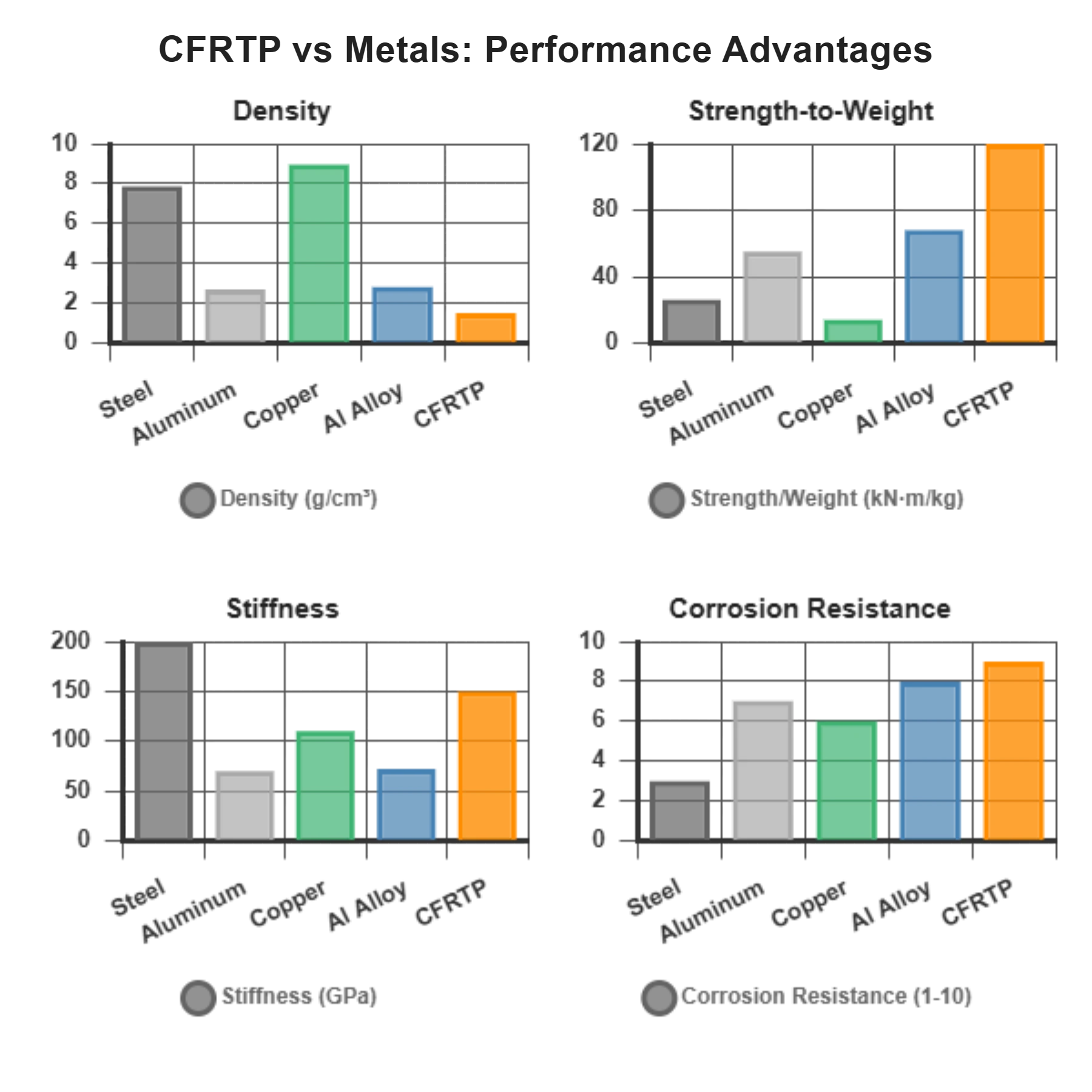
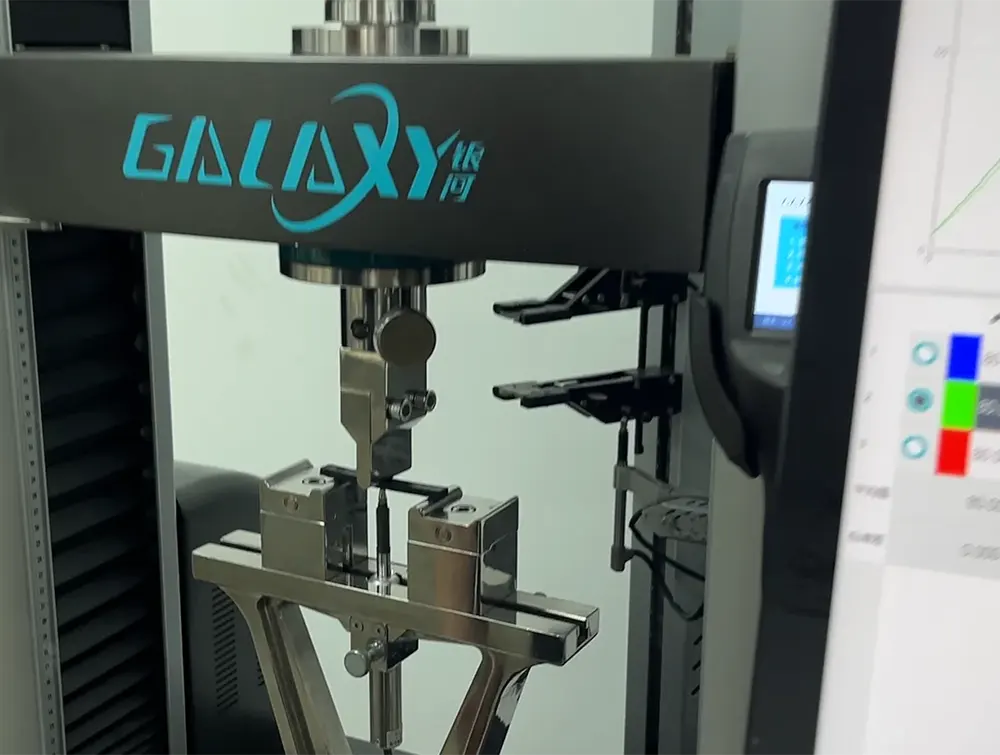

Frequently Asked Questions
Carbon (Xiamen) New Material Co., Ltd. aims to provide buyers with "one-stop" worry-free high-quality services. Here you can find all information about carbon fiber engineering plastics. If you still have questions, please send us an email for consultation!
-
How can I contact the manufacturer of a product that interests me?
When you find a product you are interested in, you can contact the manufacturer directly by sending an email and we will get back to you as soon as possible.
-
How do I find the products that interest me?
All you need to do is enter the keyword, product name in the search window and press the Enter key on your keyboard. Your search results page will then be displayed. You can also search within the product category pages on the home page. Each category is divided into subcategories, allowing you to refine your search and find products that interest you.
-
Where will I find a buying guide?
Please contact our after-sales service directly and we will provide you with a comprehensive operating guide.
-
What are CF Reinforced Thermoplastic Composites?
CF Reinforced Thermoplastic Composites are materials where carbon fibers are incorporated into a thermoplastic matrix. They combine the strength and stiffness of carbon fibers with the processability and recyclability of thermoplastics. For instance, they are used in automotive parts like bumper beams.
-
What are the benefits of CF Reinforced Thermoplastic Composites over traditional composites?
The key benefits include faster production cycles, easier recyclability, and better impact resistance. They also offer design flexibility. An example is in the manufacturing of consumer electronics casings where complex shapes can be achieved more easily.
-
How are CF Reinforced Thermoplastic Composites processed?
Common processing methods include injection molding, extrusion, and compression molding. Injection molding is widely used for mass production. For example, in the production of small components for the medical industry.
-
What industries use CF Reinforced Thermoplastic Composites?
They are utilized in aerospace, automotive, medical, and sports equipment industries. In aerospace, they can be found in interior components. In the medical field, they might be used in prosthetics.
-
How does the carbon fiber content affect the properties of the composites?
Higher carbon fiber content generally leads to increased strength and stiffness but may reduce ductility. A moderate content is often balanced for specific applications. For example, a higher content might be preferred in structural parts of a race car.
-
What are the challenges in using CF Reinforced Thermoplastic Composites?
Challenges include higher material costs, complex processing equipment requirements, and ensuring uniform fiber dispersion. Issues with adhesion between the fibers and the matrix can also arise. An example is in achieving consistent quality in large-scale production.







